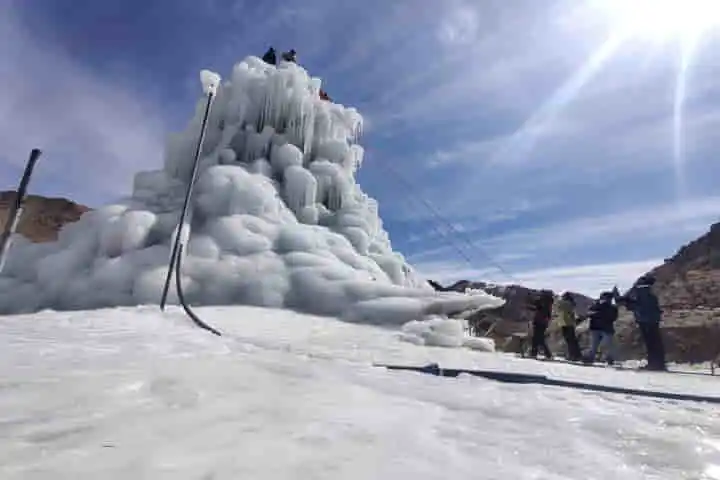The gradual disappearance of glaciers is indeed worrisome since a large number of people – 1.9 billion – depend on them for both watering their crops and quenching their thirst. It is reckoned that from 2015 onwards nearly 300 billion tons of ice has melted from glaciers located in high mountains annually.
The Chilean Andes residents are now encountering summers – from December to February — which are very dry, more so since the retreat of glaciers, according to an article in smithsonianmag.com. Exploring a way out of this problem, experts in that region are planning to construct artificial glaciers. This will provide a sustained supply of water to people residing in the Cajon del Maipo mountain range.
Plans are afoot to create 50 ice stupas. These will have plenty of water that will be collected in winters and frozen at night to provide relief during the summer. If these stupas are accomplished it will have more than 25 million gallons of water to take care of the needs of a lakh of people for a period of three months.
Talking to Reuters, Enrique Gellona, Project Director said: “We are looking for a solution that actually allows us to protect water for a longer time in the mountain range, and then deliver it to communities downstream.”
The idea for the Cajon del Maipo project was drawn from an initiative that was done in Ladakh Valley, India. The region is located between the Greater Himalayan and Karakoram ranges. Here an engineer by the name of Sonam Wangchuk invented the first ice stupa to tackle the drought affecting the region.
Using a long pipe, Wangchuk and his students took stream water and pumped it down towards the valley. They then created a fountain by spraying the water out of a vertical pipe. They would open the nozzle at night with the water freezing as it trickled down to the ground. In this way, a 20-foot pile of ice which was cone shaped was created and it had 40,000 gallons of water, according to a National Geographic report.
Residents of Ladakh Valley, numbering nearly 300,000 are confronted with the same problems that Cajon Del Maipo people in Chile face. To sustain their life and livelihood they need water but changing weather and climate conditions is reducing the glaciers leading to flash floods and droughts.
Also read: Can big eating Baleen whales clean up the oceans, arrest Climate Change?
From 2013 onwards Wangchuk has been teaching villagers in Ladakh how to build the ice stupas and in 2020, 26 were made of which nine were more than 100 feet tall. The NG report mentions that these stupas can sustain the entire dry season, depending on the sunlight and temperatures.
What Wangchuk and his community are facing is not their doing. He told NG: “We have a negligible carbon footprint, but we are bearing the brunt of a changing climate.”
Also read: Mexico’s mysterious Red Mangroves reveal how rising sea levels can hit environment




















